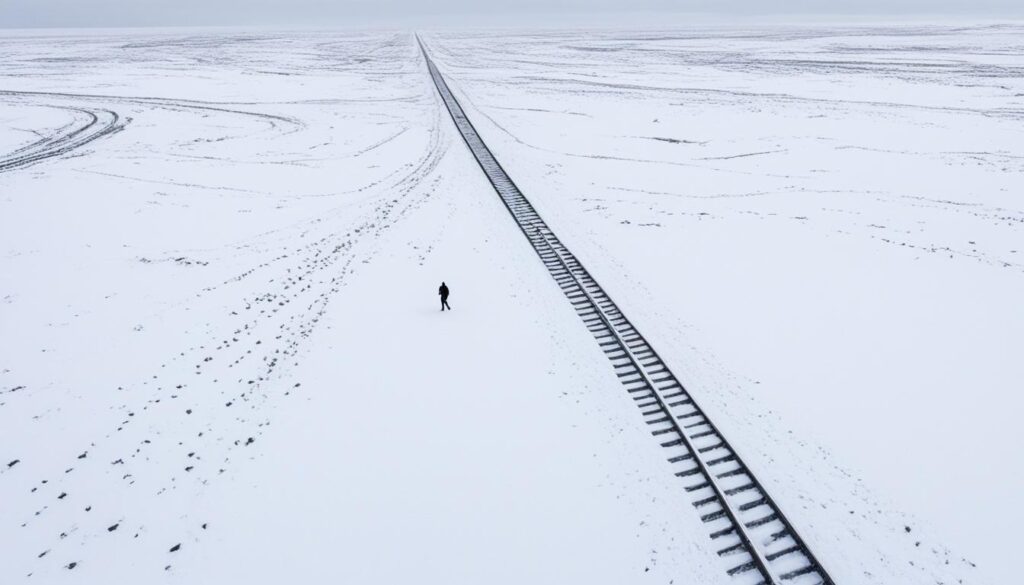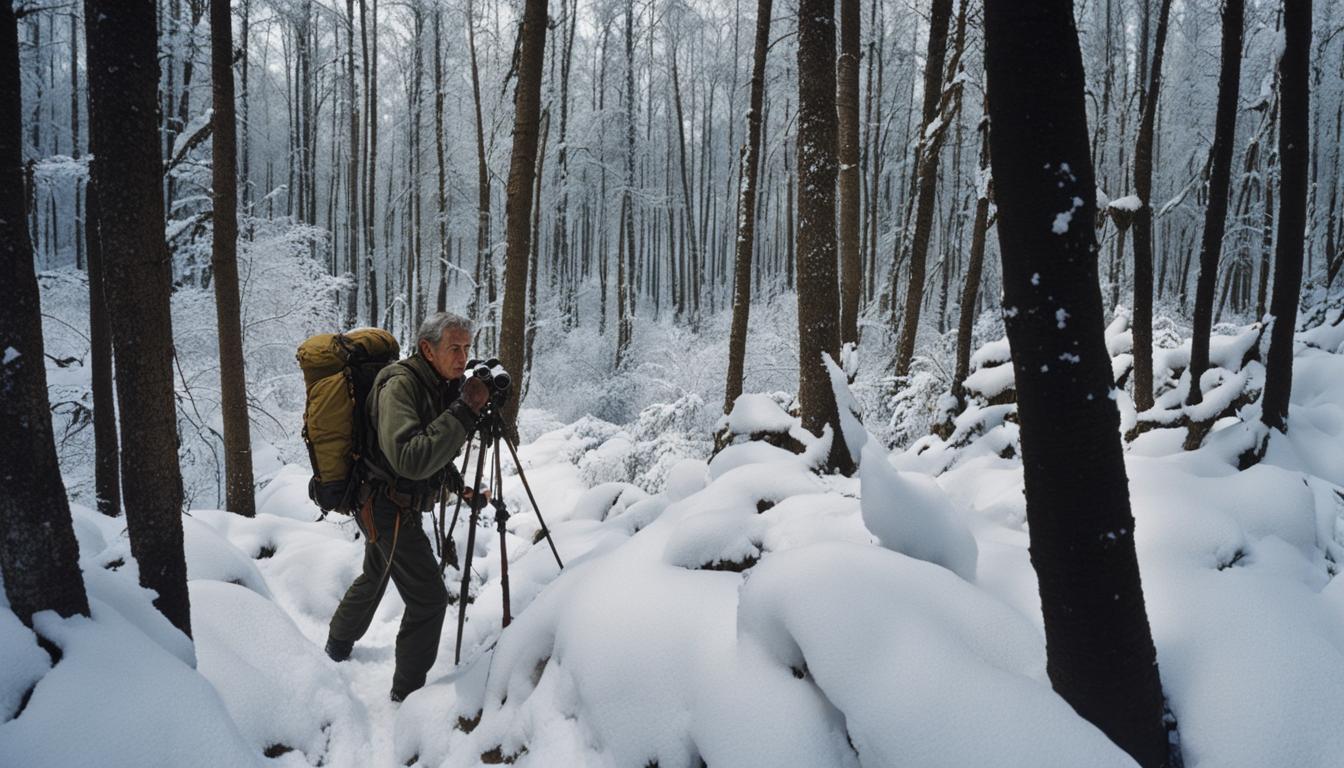If you’ve ever been captivated by the sheer magnificence of tigers, “Tigers in the Snow” by Peter Matthiessen is the book for you. This incredible piece of literature focuses on Matthiessen’s quest to save these majestic creatures from extinction, providing an intense and informative account of their plight in the modern world.
Peter Matthiessen was a renowned author, naturalist, and explorer, whose writing style was authentic, informative, and thought-provoking. Through his powerful storytelling, Matthiessen brings to life the captivating world of tigers, their natural habitat, and the beauty and grace of these fascinating creatures.
In this article, we explore the world of tigers as Matthiessen saw it, highlighting their unique characteristics and role in the ecosystem. We also discover the conservation efforts undertaken to protect tiger species, focusing on Matthiessen’s tireless dedication to their survival and the challenges he faced along the way. Ultimately, we share the key takeaways from “Tigers in the Snow,” emphasizing the book’s importance in preserving these magnificent beasts that continue to capture the world’s imagination.
About the Author: Peter Matthiessen
Peter Matthiessen was a prominent figure in the literary world, known for his captivating works and extensive travels. Born in 1927, he began his career as a novelist, winning acclaim for his works such as “The Snow Leopard” and “At Play in the Fields of the Lord.” As a journalist, he wrote for the likes of The New Yorker, covering topics such as politics, travel, and the environment.
He was also an advocate for preserving the environment and its inhabitants, particularly the majestic tigers that he featured in his book “Tigers in the Snow.” His writing style was insightful and precise, often utilizing beautiful descriptions of nature to bring his stories to life.
Matthiessen was an award-winning author and co-founder of The Paris Review. He passed away in 2014, leaving behind a rich legacy of literature and activism that continues to inspire readers and environmentalists around the world.
The World of Tigers
As one of the most fascinating animals on the planet, tigers are renowned for their unique physical characteristics and awe-inspiring beauty. These big cats are native to Asia, where they roam freely in diverse habitats ranging from tropical forests to grasslands and savannas.
Their habitat preferences can vary depending on their subspecies, with some preferring the dense forests of Southeast Asia, while others thrive in the colder climates of northern regions. Regardless of their location, tigers play a crucial role in maintaining ecological balance and preserving biodiversity in their ecosystems.
| Physical Characteristics of Tigers | |
|---|---|
| Size | Tigers are the largest members of the cat family, with males weighing up to 660 pounds (300 kg) and females weighing up to 290 pounds (130 kg). They can grow up to 10 feet (3 meters) in length, from head to tail. |
| Coat | Tigers have an iconic orange coat with black stripes, while other subspecies may have a white, black, or golden hue. Their skin is covered in short, dense fur, which they shed in warmer seasons. |
| Stripes | No two tigers have the same stripe pattern, which serves as a distinct identification mark. These stripes also help them blend into their surroundings, making them effective hunters and trackers. |
| Paws | Tigers have large paws with retractable claws, which help them grip prey during a hunt. They can also use their paws to swim, as they are excellent swimmers. |
Despite their majestic appearance, tigers face numerous threats to their survival, primarily caused by human activities such as poaching, habitat loss, and fragmentation. It’s imperative that we continue to raise awareness about these issues and take action to protect the endangered tiger species.
Conservation Efforts
The endangered tiger species are facing significant threats from habitat loss and poaching. However, dedicated conservation efforts aim to protect and preserve these majestic creatures. Peter Matthiessen’s tireless work in tiger conservation has had a profound impact on these efforts.
One such initiative includes the establishment of tiger reserves to safeguard their habitat. The government of India, where tigers are found in the wild, declared several areas as protected reserves, such as Pench, Kanha, and Bandhavgarh. These reserves have played a vital role in the collective conservation efforts, providing a safe haven for tigers to breed and thrive.
| Conservation Efforts | Tiger Population Count |
|---|---|
| Wildlife Protection Society of India | From 400 in 2010 to 2500 in 2019 |
| World Wildlife Fund | From 3200 in 2010 to 3890 in 2016 |
Poaching remains a significant threat to tiger population. With the rise of black markets in tiger parts for traditional medicinal use, poachers kill the big cats to obtain their bones, claws, and whiskers. Conservationists work with governments, law enforcement, and local authorities to remove traps and nets used by poachers, and regular patrolling ensures poachers face the full extent of the law.
In conclusion, the conservation of tiger species requires a concerted effort from individuals and organizations worldwide. Peter Matthiessen’s dedicated work in tiger conservation has brought significant attention to the plight of these majestic cats, highlighting the need to protect them for our future generations.
Matthiessen’s Journey
As the world faces a crisis in tiger populations, Peter Matthiessen takes on a daunting quest to save these majestic creatures from extinction. His journey is fraught with challenges – from navigating dense jungle terrain to battling poachers and wildlife traffickers.
Matthiessen’s fascination with tigers began at a young age, and he spent many years traveling to remote areas of the world to observe them in their natural habitat. However, it was not until he witnessed firsthand the devastating impact of habitat loss, poaching, and human encroachment on tiger populations that he felt a calling to take action.
Throughout his journey, Matthiessen encounters astonishing tales of resilience and courage, from forest rangers risking their lives to protect tigers to activists campaigning against the illegal wildlife trade.
Through his work, Matthiessen highlights the urgent need for conservation efforts and underscores the crucial importance of preserving tiger habitats. His quest is a reminder of the beauty and power of these magnificent creatures and the responsibility we all have to protect them.

“The tiger is the only animal that can totally dominate its environment. I have seen them do it in the thorn forests of India and the Russian taiga, in Indonesian rainforests and Sumatran swamps…I cannot imagine a world without tigers.” – Peter Matthiessen
The Beauty of Tigers
As Peter Matthiessen eloquently portrays in “Tigers in the Snow,” these magnificent creatures possess an undeniable beauty and grace that captivate the human spirit. Through his vivid descriptions and personal experiences, Matthiessen brings to life the raw power and majestic nature of tigers, an apex predator that commands respect across the animal kingdom.
With their striking orange fur, black stripes, and piercing eyes, tigers possess an undeniable beauty that draws admiration from all who witness it. Their lithe, powerful bodies move with grace and fluidity, embodying a distinguished elegance that belies their ferocious hunting instincts.
“The beauty of the tiger is that it can be so fierce and so gentle. These are the qualities of a maternal being.” – Ashlan Gorse Cousteau
Despite their regal appearance, tigers are a vulnerable species, facing numerous threats to their survival, including habitat loss, poaching, and human activities. As Matthiessen highlights in his writing, it is imperative that we recognize the beauty and importance of these creatures and take action to protect them. Preserving these magnificent tigers not only ensures the survival of a vital species, but it also safeguards the natural balance of our world and the inherent beauty within it.
Threats and Dangers
The majestic tiger is one of the most endangered animals in the world, with a dwindling population that is continually threatened by multiple factors. One of the most significant threats is habitat loss, as the destruction of forests, grasslands, and wetlands leads to the fragmentation of tiger habitats and reduced prey availability. Poaching for their skin, bones, and other body parts also poses a severe threat to tiger survival, as does the illicit trade in tiger derivatives. Human activities such as mining, logging, and infrastructure development have further exacerbated the crisis, leading to habitat fragmentation, reduced food availability, and increased conflicts between humans and tigers.
The decline of tiger populations can have detrimental effects on the ecosystem, as they play a crucial role in regulating prey species and maintaining the balance of their respective habitats. Efforts to conserve the tiger population have been undertaken by governments, non-governmental organizations, and local communities worldwide. These efforts include habitat protection, anti-poaching measures, and education and awareness-raising campaigns to generate support for tiger conservation. The work of individuals such as Peter Matthiessen has contributed significantly to the conservation movement and the protection of these magnificent creatures.
Success Stories
Tiger conservation has been a challenging task with various threats contributing to the decline in the tiger population. However, Peter Matthiessen’s remarkable work in the field of tiger conservation has resulted in some inspiring success stories. Through his exploration of the world of tigers and his conservation efforts, Matthiessen encountered stories of hope and progress that are worth sharing.
One such success story is the increase in the tiger population in India’s Periyar National Park, where tiger numbers have gone up from 100 in 1970 to more than 50 individuals today. The park’s management, with the help of local conservationists and government initiatives, implemented effective measures to safeguard the tigers’ habitat and prevent poaching, leading to a significant increase in tiger numbers.
Another inspiring story is that of the Amur tiger, whose population has increased by over 15% in the last decade, from 480 individuals in 2005 to 562 in 2015. Conservation measures, such as strict protection of the species’ habitat and anti-poaching efforts, contributed to this remarkable increase.
“These stories of success fuel my passion for tiger conservation and motivate me to continue my work,” says Matthiessen.
Matthiessen’s tireless efforts, combined with the efforts of others, have resulted in success stories that give hope and motivation to those involved in tiger conservation worldwide. These stories remind us of the importance of preserving these magnificent creatures and highlight the positive impact of our work in protecting them.
Conclusion
“Tigers in the Snow” by Peter Matthiessen is a captivating and informative book that sheds light on the plight of tigers and the urgent need for their conservation. Through his vivid descriptions and personal experiences, Matthiessen highlights the beauty and grace of these magnificent creatures and the challenges they face in their natural habitat. The book emphasizes the importance of preserving these majestic animals and the role every individual can play in protecting them.
Matthiessen’s journey to save the tigers is a testament to his dedication and passion for wildlife conservation. His work has inspired many to join the efforts to save these endangered species from extinction. “Tigers in the Snow” is a must-read for anyone interested in learning more about tiger conservation and the impact of human activities on their habitat.
In conclusion, “Tigers in the Snow” is a powerful book that offers a unique perspective on the beauty and importance of tigers in our natural world. Through his compelling storytelling, Peter Matthiessen leaves a lasting impression on his readers, inspiring them to take action and make a difference in preserving these magnificent creatures for future generations.



